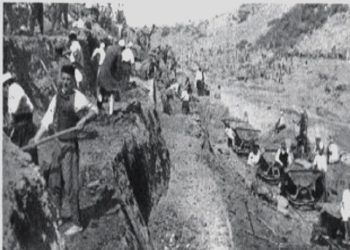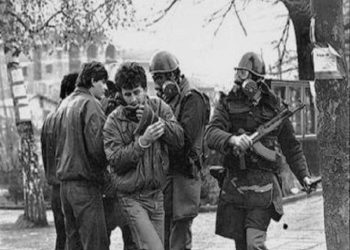By Zylyftar Hoxha
Memorie.al / It was June 1975, when, as a tele chronologist for Albanian Television, I had to climb Qafë e Martës every year, on the traditional holiday of the area, where many historical events, from the time of Lace Backa, Sali Butka to the formation of the partisan battalion “Riza Cerova” during the Anti-Fascist National Liberation War, were left on a single day, on June 22. I spent dinner, as always, with my unforgettable friend, Jake Backa. But that day I didn’t need Jake, I had him “on hand”, I needed another man, about whom I had heard interesting stories and I, surprisingly, was determined to meet him, of course.
He was Jake’s brother, convicted since the time of Koçi Xoxe. He had been one of the key cadres in the Ministry of Interior in the first years after the liberation and later head of the Shkodra Internal Affairs Branch.
After prison, he was brought to the village, in Backa, where he found his own way of opposing and resisting the regime, he isolated himself like a hermit and never crossed the gate of his house yard until he died. This was a challenge to that exhausting and fruitless work that men and women did on the steep slopes of Backa and Staravecca, where, if he had not found that way of life, he would have died.
Semi-secretly, I went to Kamberi. The first thing that struck me in that simple village room was the large-sized portrait (maybe 50×60) of a beautiful girl, hanging on the opposite wall, next to the portrait of Skanderbeg, drawn on glass with naive lines, which you could commonly find at that time, in the houses of the villagers.
Kamberi, seeing that I couldn’t take my eyes off the girl’s portrait, told me the following story, which seemed to me like an oriental fairy tale:
“There is a strange story behind this portrait, so I keep it there as one of the rarest and most special things I have. My father brought it from Turkey. He told us that he had bought it at a high price, two months of work, but sometimes the pleasure is priceless. According to my calculations now, this portrait must be from the end of the 19th century, when the photograph had also appeared.
In a campaign in Thessaly, a province still under Turkish rule even after the Greek Revolution, in a campaign of conquest, a prominent Vizier, commander of the imperial army, returned to Istanbul with victory. Joyful and puffed up with pride, he presented the Sultan with his treasure (the spoils of war), weapons, gold, and precious stones, and, when he was finished, he said to the Sultan:
‘Great Padishah and radiant! What you have here before you is nothing compared to something else that I will present now. She is a girl, I believe that our empire will have no other more beautiful than her. She will illuminate and delight the harem. May she be blessed!
After they brought the girl, accompanied by a platoon of soldiers, they left her for a few minutes in front of the Sultan, and then took her out before he could make a decision. Everyone was eagerly awaiting the great man’s decision. The most impatient, but also confident in himself that the Sultan would not leave this rare jewel outside the harem, was the Vizier. The sign of approval was that the Sultan, as he sat cross-legged under the tent, would extend his right leg, which, to everyone’s surprise, he did not do. So the girl was not accepted into the harem.
‘I knew you were wise, O Vizier, but you are a fool!’ – the Sultan says to her “To the Vizier. Just so you know, if I were to put her in the harem, I would ruin the harem and my mind together, but I need both the harem and my mind. She is really worth it and we must do something with her. Take her out in the open and distribute her to the people in the Bazaar, so that they may enjoy and be pleased with her beauty and have this memory of me,” ordered the Sultan.
From that day on, the girl’s portrait was sold in the streets and shops of Istanbul. I am not sure, but as the old man told us, they said that the sultan did not waste the image of this girl, whom he converted to Islam and whose name was recorded in the Sharia as a saint,” Kamberi concluded the story.
I asked Kamberi to photograph the portrait. He did not object, on the contrary, he helped me remove it from the wall and take it outside to the courtyard, where there was more light. I parted ways never to meet again with this noble and intelligent man, this living and silent treasure, from which I could take nothing else of that “wealth”, except the portrait and the story that he skillfully told me. Memorie.al













